You probably planted some orchids in your yard because you wanted to add some color to it. But did you know that insects and other pests adore orchids just as much as we do? In this article you will learn, if you find pests like mealybugs on orchids do this immediately to get rid of them!
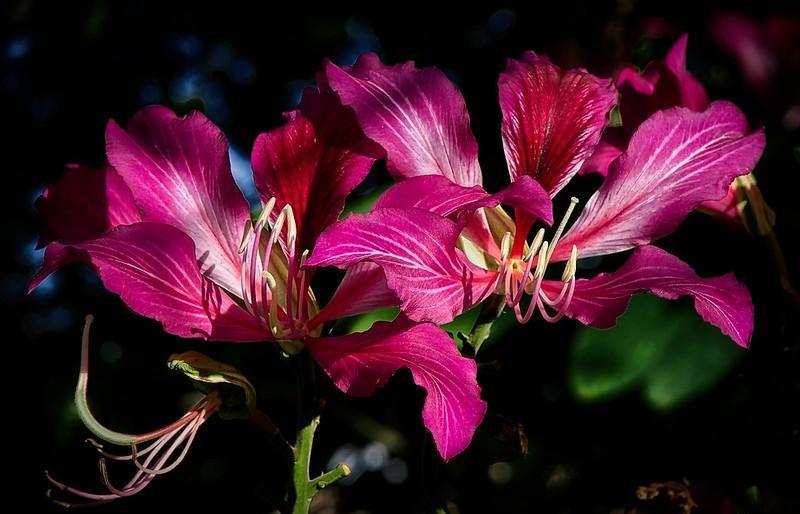
Mealybugs are tropical insects, which explains why they are attracted to your orchids.
As a result, it is crucial to take measures to safeguard orchids from mealybugs, the biggest natural threat to orchids and many other plants. You might see innocuous cottony stuff on your orchid plants one day, and the next day the plant will be overrun with mealybugs.
Mealybugs can decimate your orchids in just a few days.
Since orchids are sensitive plants, early detection of mealybugs is critical. Just a little too late, and the best remedy is to toss the plant away to save other plants in your garden. Natural and organic treatments are effective against mealybug infestations if caught early.
Homemade insecticidal soap and neem sprays can be used to treat orchid leaves. Whereas roots of orchids can be washed and the damaged parts trimmed to help them recover. You should also disinfect the soil and the pot before repotting the orchids to eliminate any remaining mealybug eggs.
You can see that all the steps are connected. If you miss one, you miss all.
So, read the whole article and don’t skip any steps to get rid of mealybugs on orchids for good.
What Are Mealybugs?

Mealybugs are little, oval insects that feed on a wide variety of plants in gardens, landscapes, and even indoors.
If you have orchids in your garden, mealybugs are your worst enemy. They are the prototypical insect pest that can be found in greenhouses, wreaking havoc on ornamentals, houseplants, avocados, and fruits. Pinkish in color, mealybugs have waxy and squishy bodies, and their exoskeletons are wrapped in a fluffy, white substance that resembles cotton.
Adult mealybugs range in length from 1/10 to 1/4 inch. They cause damage to the plant that serves as their host by inserting sucking mouthparts called “stylets” into the plant and sucking the sap out of the tissue. Mealybugs will almost always be found in colonies.
They select well-protected places to feed in, such as between leaves that are in contact with one another, soft branches, particularly those that are located closer to the ground, and on the crowns of the plants (the part where the stem meets the root).
Mealybugs’ Life Cycle
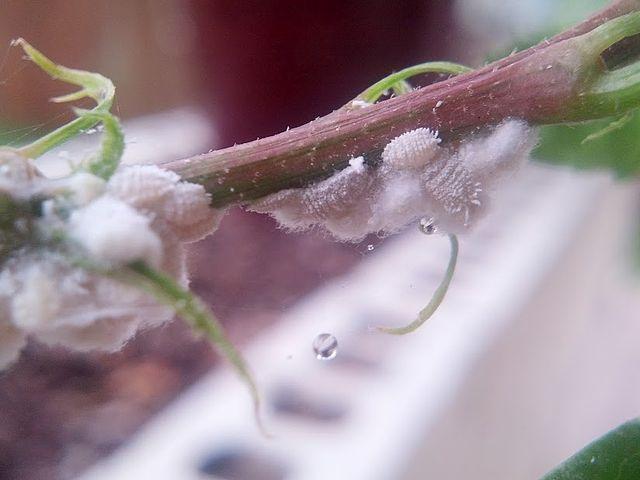
Mealybugs take between 23 to 75 days to develop from eggs to adults.
Different species of mealybug have slightly different life cycles than one another. In general, though, the life of a mealybug can be broken down into three distinct stages (egg, larva, and adult). Adult female mealybugs lay approximately 200 eggs in a spongy sac made of cotton over a period of ten to twenty days. These egg sacs can be found on the crowns, twigs, and leaves of the plant. Some mealybugs carry eggs buried inside their bodies until they hatch.
These eggs will hatch in around ten days, and the freshly hatched mealybug larvae, also known as crawlers, will range in color from yellowish to orange or pink, will not have wax on their bodies, and will be quite active. However, not long after they have settled in to eat, they start to build a waxy covering over their bodies.
Depending on the species and the environment in which they live, mealybugs can have anywhere from two to six generations in a single year. Mealybugs do well in warm regions and on plants kept inside the house. All three stages of a mealybug’s life cycle—eggs, larvae, and adults—will be visible if either of these two conditions holds true.
Related: How To Get Rid Of Thrips On Orchids For Good? The Ultimate Guide
How To Get Rid Of Mealybugs On Orchids
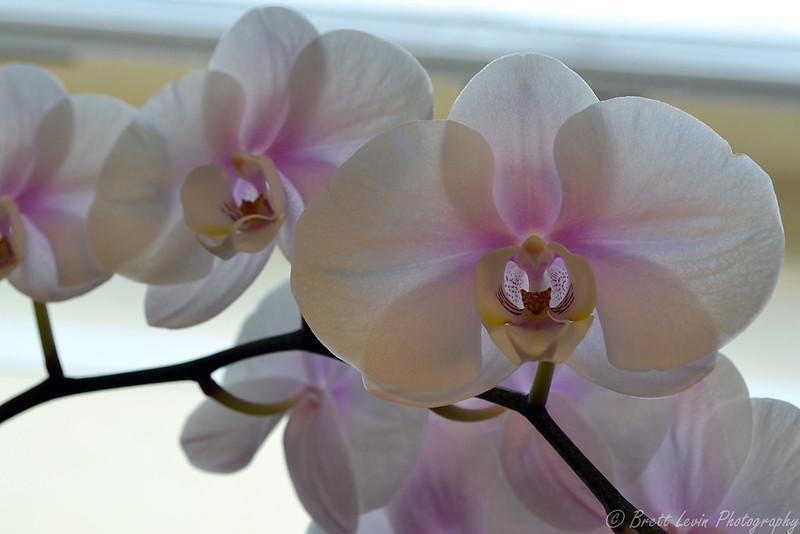
Orchid mealybugs are a severe pest that is second only to scale insects in terms of difficulty to manage.
Mealybugs on orchids can be treated in a variety of ways, depending on the condition of the plant and the severity of infestation. Perhaps you have only noticed mealybugs in the orchid roots, or maybe the infestation has gotten so bad that you can see mealybugs everywhere on your plants.
When trying to get rid of mealybugs, it’s essential to ensure that you aren’t leaving behind anything that could attract more bugs.
For instance, treating mealy bugs on leaves and not doing anything about the mealybug eggs in the soil will not solve your problem. The eggs will eventually hatch, and the process will begin once more from the start. If you want to get rid of mealybugs for good, you are going to need to follow a proper action plan. And here are some suggestions:
Treating Mealybugs On Leaves Of Orchids
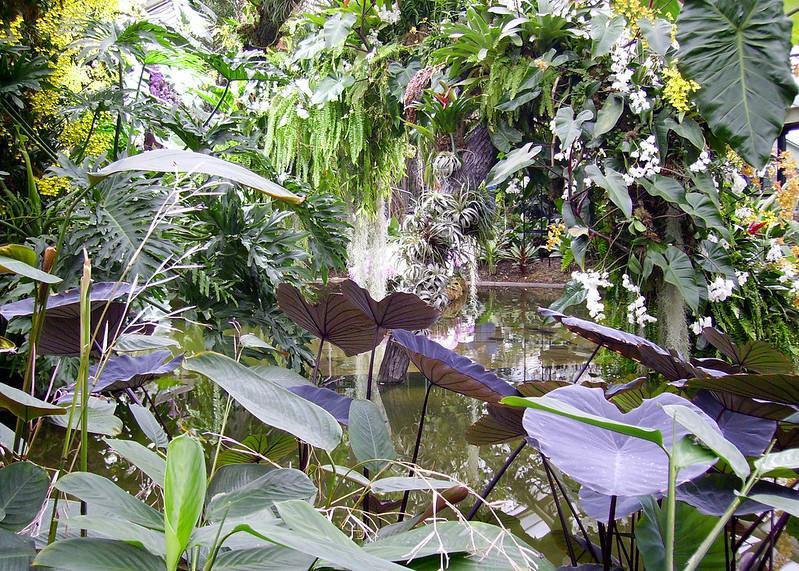
Mealybugs on orchids can be removed by hand with an alcohol-soaked cotton swab.
When treating mealybugs on orchids, you should begin by removing them from the leaves. If you observe mealybugs feeding on the leaves of your plant, this is a sign that the plant is already suffering from a severe infestation. Mealybugs on leaves can be treated using a variety of approaches. However, in this article, we will focus on natural and organic methods. These techniques are risk-free and relatively simple to put into action.
Insecticidal Soap To Get Rid Of Mealybugs On Orchids
Mealybugs on orchids respond well to treatment with insecticidal soaps, which kill the pests. Active chemicals in soaps that kill insects are usually potassium salts (soap salts).
These salts function by drying out (dehydrating) the mealy bugs, which ultimately leads to the bugs’ deaths. However, it would help if you exercised extreme caution because the insecticidal soaps can also cause damage to the orchids. The idea is to apply the insecticidal soap while the temperature is lower than 85 degrees Fahrenheit.
At higher temperatures, insecticidal soap can burn the orchid leaves and flowers. When applying insecticidal soap, spray it directly on the regions that are plagued with mealybugs. This ensures that you get the best possible outcomes.
Coating the leaves with cotton swabs is another option. However, be sure to cover every portion of the leaf, including the creases and cracks on the surface of the leaves. You’ll have to be consistent and continue this treatment for at least a week to get good results.
How To Make Insecticidal Soap At Home
Yes! You can make insecticidal soap at home, which is a relatively straightforward process. Simply take one cup of olive oil and mix it with one tablespoon of dishwashing liquid.
Next, put this mixture in a spray bottle and add one cup of warm water. Shake the bottle well to mix everything, and your insecticidal soap is ready to use.
Use Neem Oil To Get Rid Of Mealybugs On Orchids
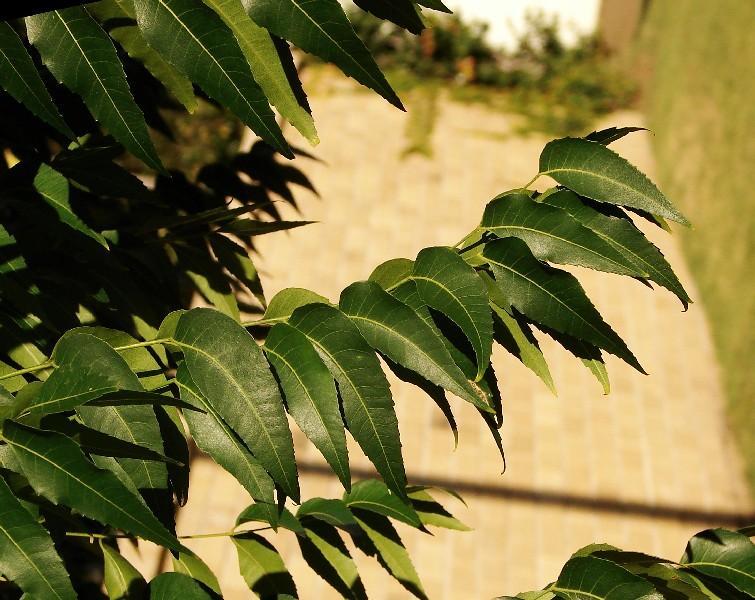
Controlling a mealybug infestation with neem oil poses little risk to humans, animals, and beneficial insects.
You can also apply neem oil on the leaves of your orchids in order to treat the mealybug infestation there. The active component of neem oil is called azadirachtin, which prevents female mealybugs from laying eggs. Additionally, azadirachtin causes mealybugs to lose their appetite, which causes them to stop feeding, resulting in their death.
Since insecticidal soap must come into physical contact with mealybugs in order to be effective, we can say that neem oil is superior because it does not necessitate physical contact. Direct contact with the oil can also kill mealybugs, but it is not necessary. The plant absorbs Neem oil and then works its magic when mealybugs feed on the plant.
However, if you want results as quickly as possible, we recommend spraying the oil directly on the infested regions, concentrating on the mealybugs. You should apply this treatment either very early in the morning or late in the evening, just like insecticidal soap.
This is because, if the temperature is high, there is always a chance that the neem oil will damage the leaves of the orchids.
Related: What do Nineteen Must-Have Meaningful Colored Orchids Mean in your Life
Using Rubbing Alcohol To Get Rid Of Mealybugs On Orchids
Probably the most common do-it-yourself method for getting rid of mealybugs is to wipe and smear plants with a cotton swab or ball of cotton doused in isopropyl (rubbing) alcohol. However, please do not use other types of alcohol like ethanol or methanol because they can get deep into the plant’s tissues and do a great deal of damage!
To remove scale, mealybugs, mites, and aphids from orchids, all you need to do is dip a cotton swab in isopropyl (rubbing) alcohol that is 70 percent strength, and then dab the affected areas. Since this alcohol dissolves the waxy covering of the insect, it can be used as a useful tool to access the pests that are hidden deep within the sheaths and leaf fissures.
It doesn’t matter what you do. Under no circumstances should you take a cotton ball, dip it in alcohol, and then rub it back and forth across the leaves, particularly on the underside. This is a spot-touch method. You still want your orchid to have adequate air circulation. Removing the mealybugs by hand takes some time, but it’s essential.
An alternative is to use a mister bottle or a mini pump sprayer to apply a mixture of alcohol and a few drops of mild liquid soap. However, please don’t use a lot of detergents or use them too strongly, or you could end up killing your plants, especially the buds and blossoms.
How To Get Rid Of Mealybugs In The Soil
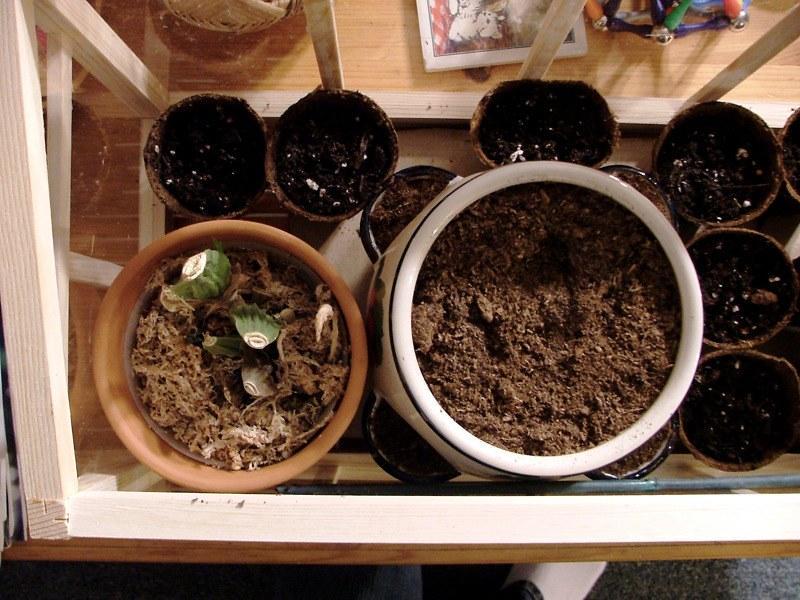
Mealybugs must be eliminated fast. Once established, they’re challenging to remove.
You’re mistaken if you believe your job is done once you’ve eliminated the mealybugs from the leaves. You should really reconsider your position. While mealybugs are eating on leaves, the females deposit their eggs in the surrounding ground. The newly hatched larvae are unable to climb the orchid, so they burrow into the ground and begin feasting on the roots of the plant.
Therefore, after treating mealybugs on the leaves of your orchids, you will also need to treat the soil beneath them in order to eliminate mealybug eggs. Here are a few suggestions:
Sterilizing The Potting Mix
Soil sterilization is necessary if you want to get rid of mealybug eggs in orchid soil. In this context, “sterilizing” refers to the process of heating the ground in order to raise its temperature. That can be accomplished in a few different ways.
You could, for instance, bake the soil in the oven, or you could just put the dirt out in the open in the hot sun on a day when the temperature is high.
Regardless of the approach that you take, the primary goal is to raise the temperature of the soil to approximately 180 degrees Fahrenheit and then keep it at that level for approximately thirty minutes. If you sterilize the ground, the mealybug eggs will be eliminated, and you won’t have to worry about seeing them again.
Replacing The Soil Entirely
If you are unable to sterilize the potting mix at home, the method that will be the most effective and the least difficult will be just to replace all of the soil. You don’t want there to be any mealybug eggs in the soil of your orchids because any mealybug eggs in the ground will trigger an outbreak of the full-blown infestation all over again.
Also, when you are switching out the soil mix for something new, make sure to give the container a good cleaning before adding new soil to it. For instance, you can wash the pot with isopropyl alcohol to remove any eggs that may have been left behind in the pot.
Furthermore, when purchasing new soil, you should make an effort to acquire one that has been sterilized. Purchasing soil that is already infested (with mealybug eggs or eggs of some other harmful pest) could be a significant mistake. Therefore, chip in an extra dollar and buy high-quality, sterilized soil. It is totally worth it!
How To Get Rid Of Mealybugs On Orchid Roots
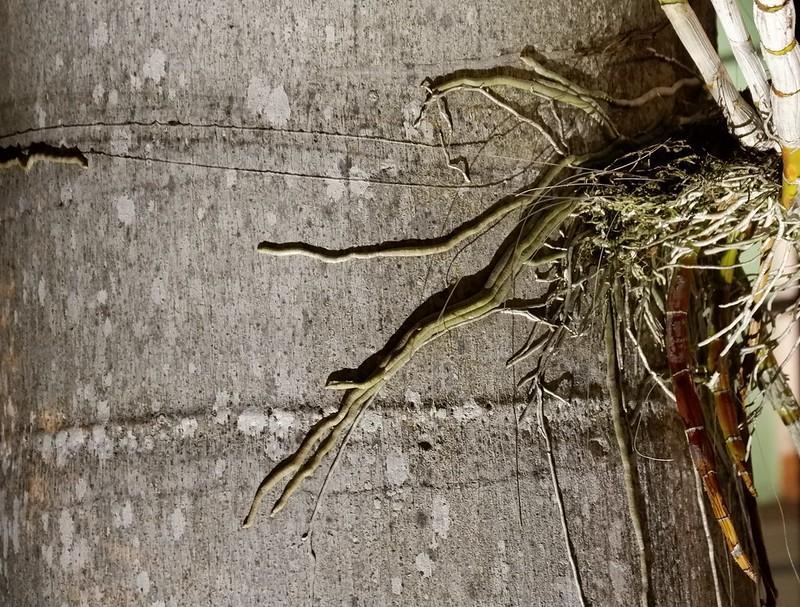
Mealybugs really like to hide on roots and rhizomes in your potting media for orchids.
Moving on to the third and last stage of our mealybug treatment for orchids, it is now time to eliminate mealybugs from the roots of your orchid plant. However, keep in mind that it is not easy to eradicate mealybugs from orchid roots. You can’t risk damaging the tender roots by exposing them to heat. As a result, you must be cautious.
Keeping this in mind, we will provide you with two methods you can use to get rid of the mealybugs living in the roots of orchids without causing any damage to the plant itself.
Washing Orchid Roots To Get Rid Of Mealybugs
One of the most effective and straightforward ways to get rid of mealybugs and the eggs they lay is to wash the roots of the orchid. To clean the roots of the orchid, fill an open container with lukewarm water, and then soak the roots of the orchid in this water for a few minutes.
Allow the water to seep into the roots of the orchid for some time (10 minutes at least and 15 minutes at maximum). Then, before removing the roots from the water, give them a slight shaking and a gentle stir to eliminate any mealybugs that may still be present.
After that, spread the roots out in the fresh air and allow them to dry completely before going on to the following stage, which is to cut any damaged roots.
Clipping/Trimming The Damaged Orchid Roots
Dead or rotting roots should also be clipped before repotting the orchid plant. However, before you proceed, check to see that your scissors and/or cutting shears have been well cleaned and disinfected. In order to sterilize the clipping tools, combine a half cup of bleach with one gallon of water and then wash each of the clipping tools in the solution.
Dry them by rubbing them against a fresh towel. Finally, put some isopropyl alcohol on a cotton ball and wipe the scissors with it and let it dry in the air. You can now proceed with the procedure on the roots. It is recommended that you cut away all of the rotting and damaged roots. When roots have been injured, they become mushy and brown in color.
Also, when you are trimming these roots, you should make the cuts in a diagonal pattern so that the roots may recover more quickly. After you have clipped the roots, some individuals will suggest that you spray them with hydrogen peroxide, but you should avoid doing this because it is harmful to the roots of the orchid.
How To Re-Pot The Orchid Plant Properly
The final step in the treatment of mealybugs on orchids is repotting the orchid plant properly. It does not require rocket science to realize that you also need to get rid of any lingering eggs or mealybugs in the pot before repotting the orchid.
All of your efforts will go to waste if you miss this final step.
The following steps should be followed to repot the orchid plant properly:
- First of all, scrub the pot with hot water to remove any dirt.
- Then, soak the pot in bleach water (half cup bleach + one-gallon water) for half an hour.
- Rinse the pot and wash it again using dishwashing liquid to get rid of bleach residue
- Dry the pot by wiping it with a clean piece of cloth or towel
Now your pot is clean and clear of any mealybug eggs and is ready for the orchid plant. Repot the orchid and check every week for any signs of infestation.
Related: How Stunning Dyeing Orchids Blue is Possible with Hassle Free Fun Ways
What About Chemical Control?
We strongly advise against applying any kind of chemical, and especially not on any kind of ornamental plant. Chemicals not only cause damage to the plant itself, but they also eliminate beneficial insects, which are essential for the health of your garden.
However, if you find yourself in a situation where you have to use chemical control, we strongly advise that you stick to pesticides that have been approved for use on ornamental plants. Malathion, carbaryl, diazinon, and acephate are some options that you can look into.
Also, when working with chemicals, it is important to always follow the instructions that are provided on the product and to use protective gear like gloves. Also, you should switch between different insecticides because if you use the same insecticide repeatedly, mealybugs will develop immunity against the chemical and will stop working after some time.
Conclusion
Even if you take all of the necessary precautions, it is still possible for mealybugs to find their way into your house or garden by accident. When you water your plants, make sure you thoroughly inspect them for any symptoms of mealybugs. If you catch an infestation in its early stages, treating it will be a lot simpler. Also, if you immediately separate the contaminated plant from the rest of the garden, it’s possible that none of the other plants will be harmed.
It can be upsetting to see mealybugs in or near your orchid, but there’s no need to panic! You can handle this situation with a few straightforward interventions. Heavy infestations of mealybugs, particularly on a wide variety of plants, could call for harsh treatment approaches that involve the use of insecticides. However, if the infestation is on the light side, you should always start with organic and natural control methods.
Frequently Asked Questions
How do I get rid of mealybugs on orchids?
Using rubbing alcohol, which is also known as isopropyl alcohol, is the simplest way to get rid of mealybugs that have taken up residence in your orchids.
You can increase the potency of your GET OFF ME! formula by adding cinnamon. Pour a combination of 50 percent alcohol and 50 percent water in your spray bottle and then add a cinnamon stick and spray it on your plants.
Will soapy water get rid of mealybugs?
On most houseplants, ornamental plants, and fruit trees, soaps are effective in killing a wide variety of insect pests, such as mealybugs, spittlebugs, rose slugs, and soft scale, as well as whiteflies and aphids.
Mealybugs will suffocate to death if they come into contact with soapy water. However, do not use hard water. Hard water contains minerals that react with soap, rendering it inefficient for killing mealybugs. Hard water is also known as mineral water.
Are mealybugs hard to get rid of?
Mealybug infestations ranging from light to moderate can be successfully treated relatively easily. A severe infestation of mealybugs is far more challenging to control, and it places all other plants in an extremely precarious position.
Mealybugs are like a plague. They may swiftly go from one plant to another, and if an infestation is discovered while it is already in its latter stages, it can be quite challenging to eradicate them.
Can mealybugs infest your house?
Mealybugs are a severe problem for indoor plants, whether in greenhouses, homes, or businesses. Make sure to properly inspect any plants that have been brought indoors for the winter since they may be a source of insect pests like mealybugs.
Mealybugs can be quite annoying and challenging to control. Mealybugs are frequently discovered indoors, such as in your living room or glasshouse, because they thrive in warm, humid temperatures.
Can you spray vinegar on orchids?
It’s a great idea to use diluted vinegar to remove mineral buildup from orchid leaves, but take caution because some vinegars might be far too acidic for the plant, doing more harm than good.
Milk is helpful in cleaning orchid leaves as well. When transplanting orchids in spring, white vinegar is also used to irrigate the soil to correct the pH and stimulate development.
How did my plant get mealybugs?
While mealybugs may seem to arrive out of nowhere, they are frequently transported into your house. For instance, mealybugs can enter your home (or outside plants) by traveling with infected plants from a nursery. They disperse among plants and eat the growth tips. Additionally, a plant will eventually perish if a mealybug infestation is not handled.
How do you stop a mealybug infestation?
The only effective strategies to prevent mealybug are to avoid leaving your plants outside in the summer and thoroughly inspect them for signs of an infestation. Pruning infected branches and leaves is another option. Additionally, if you discover a plant plagued with mealybugs, move it to a different area to prevent the infection from spreading.
Sources For Further Reading
Mealybugs in Greenhouses. (2015). Retrieved 22 September 2022, from https://ag.umass.edu/greenhouse-floriculture/fact-sheets/mealybugs-in-greenhouses
Mealybugs: A common pest of indoor plants. (2017). Retrieved 22 September 2022, from https://www.canr.msu.edu/news/mealybugs_a_common_pest_of_indoor_plants
Mealybugs Management Guidelines–UC IPM. (2022). Retrieved 22 September 2022, from http://ipm.ucanr.edu/PMG/PESTNOTES/pn74174.html
Editor’s Recommendations
Potato Bug 101: Potato bug bites! And everything else that you’d like to know!
What Are the Best Practices to Get Rid of Destructive Leaf Miners?
How to Kill Maggots with Bleach? Know About Various Methods!







